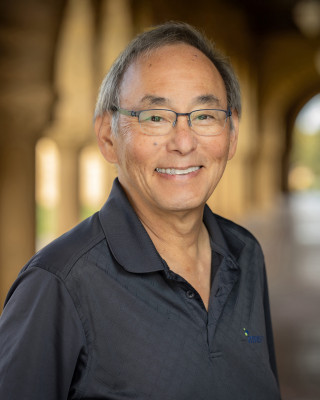Steven Chu: My Random Walk in Science
Event Details
Canyon
About the Lecture
Science does not always advance with a clear vision. Scientific trajectories, and more generally, the course of one’s life, seldom follow predictable paths. In this Frontiers of Science lecture, Steven Chu will talk about the many turns in his career beginning with his days as a graduate student at the University of California, Berkeley, Bell Labs, Stanford, Lawerence Berkeley National Lab, the Department of Energy and his return to Stanford testing fundamental theories of physics, laser cooling and trapping of atoms, atom interferometry, single molecule biology and polymer physics, and more recently, clean energy research. Chu's presentation will focus on recent experiments work on a new method to capture CO2 and understanding the physics of how the molecular motor dynein works and a new method to capture CO2.
This event is hosted by the University of Utah's College of Science and is part of Frontiers of Science, the longest running lecture series at the university. Steven Chu's lecture is co-sponsored by the Natural History Museum of Utah and the Wilkes Center for Climate & Policy.
This event is free to attend with RSVP.
About the Speaker

Steven Chu is Professor of Physics, Molecular and Cellular Physiology, and Energy Science and Engineering at Stanford University. He received the 1997 Nobel Prize in Physics for laser cooling and trapping of atoms. Other contributions include the first optical tweezers manipulation of biomolecules, precision atom interferometry based on optical pulses of light, and single molecule FRET of biomolecules tethered to surfaces. He is now developing and applying new methods in molecular biology and medical imaging, materials science, and batteries. Previously he was U.S. Secretary of Energy, where he began ARPA-E, the Energy Innovation Hubs, and was tasked by President Obama to help BP stop the Macondo Oil spill. Previously, he was Director of Lawrence Berkeley National Laboratory and Professor of Physics and Applied Physics at Stanford, and helped initiate Bio-X, which linked the physical and biological sciences with engineering and medicine. Before Stanford, he was a department head at Bell Laboratories. He was past president of the American Association for the Advancement of Science, a Senior Advisor to the Directors of the NIH and the NNSA. He received an A.B. degree in mathematics and a B.S. degree in physics from the University of Rochester, a Ph.D. in physics from the University of California, Berkeley, has 35 honorary degrees, and is a member of the U.S. National Academy of Sciences and 8 foreign academies.
